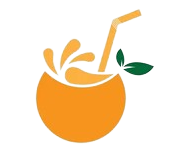From Grove to Glass: A Journey into the Orange Juice Production Process

Orange juice, a beloved and refreshing beverage enjoyed by millions worldwide, undergoes a fascinating journey from the sun-kissed groves to the glasses on our tables. The process of transforming succulent oranges into the vibrant and nutritious liquid we savor is a tale of meticulous care, advanced technology, and an industry deeply rooted in tradition.
1. Harvesting the Golden Crop:
The journey begins in the lush orange groves, where rows of citrus trees bear the fruit of sunshine. Harvesting oranges is an art, often done by skilled pickers who carefully pluck the ripest and juiciest fruits from the trees. Timing is crucial, as the flavor and quality of the juice depend on the fruit’s maturity.
2. Squeezing the Sunshine:
Once harvested, the oranges make their way to processing facilities where they are cleaned and sorted. The heart of the operation lies in the extraction of juice. Modern facilities employ a variety of methods, from traditional squeezing to advanced mechanical presses, ensuring maximum yield while preserving the fruit’s natural goodness.
3. Filtering and Concentrating:
To achieve the desired consistency and flavor, the freshly squeezed juice undergoes filtration. This step removes pulp, seeds, and any unwanted particles, resulting in a smooth and clear liquid. Some orange juices are concentrated for easier storage and transportation, a process that involves removing water and later reconstituting it before packaging.
4. Pasteurization for Preservation:
To guarantee the safety and extend the shelf life of orange juice, pasteurization is commonly employed. This heat treatment kills bacteria and enzymes, maintaining the freshness of the juice for a more extended period without the need for added preservatives.
5. Packaging and Presentation:
After pasteurization, the orange juice is ready for packaging. Modern technology allows for a variety of packaging options, from traditional cartons to innovative pouches and bottles. The packaging not only protects the juice from external factors but also enhances convenience for consumers.
6. From Plant to Store:
The packaged orange juice is then transported to distribution centers and eventually to grocery stores around the globe. This intricate logistics network ensures that consumers can enjoy a glass of orange juice, regardless of their location, while maintaining its quality and freshness.
7. Sustainable Practices:
In recent years, there has been a growing emphasis on sustainability within the orange juice industry. Many producers are adopting eco-friendly practices, from responsible farming techniques to energy-efficient processing methods, reducing the environmental footprint of the entire production process.
8. Consumer Choices and Trends:
As consumer preferences evolve, the orange juice industry adapts to meet changing demands. From organic and non-GMO options to innovative blends and flavor profiles, producers continually strive to offer a diverse range of choices that cater to a wide audience.
In conclusion, the journey from grove to glass in the orange juice production process is a testament to the intersection of tradition and technology. From the sun-soaked groves where oranges ripen to the advanced processing facilities that transform them into a refreshing beverage, every step in this journey contributes to the creation of a timeless and beloved drink. Understanding the intricacies of this process adds a new layer of appreciation for the glass of orange juice on our breakfast tables, connecting us to the orchards where it all begins.



